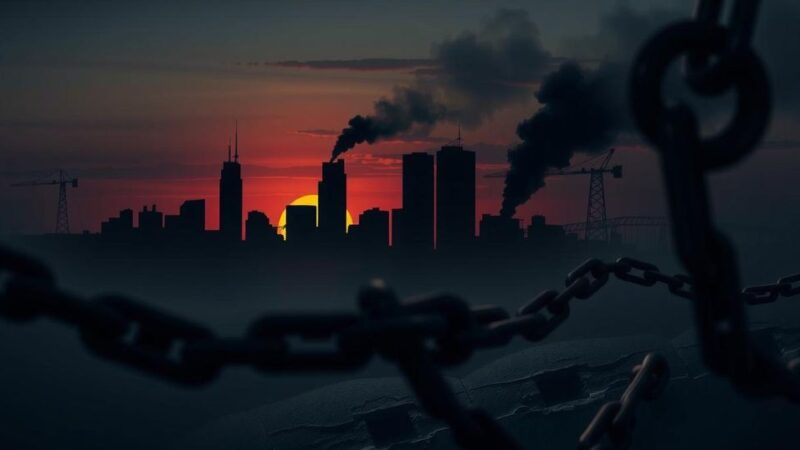The Congolese government has denounced the M23 rebel ceasefire as “false communication” amidst ongoing fighting, particularly in Goma. The rebels’ recent control over significant territories, coupled with reports of heavy casualties, has drawn international focus on the crisis. Regional leaders are set to discuss the conflict, which has seen thousands of deaths and a dire humanitarian situation.
The Government of the Democratic Republic of Congo has condemned the ceasefire declaration made by M23 rebels, labeling it as a “false communication.” This assessment follows reports of ongoing intense confrontations between the rebels, allegedly supported by Rwanda, and Congolese military forces, particularly in the eastern regions. Despite the M23’s announcement on humanitarian grounds, the Congolese government insists that the primary expectation is the withdrawal of the rebel forces from captured territories, notably Goma, a prominent city rich in mineral resources.
The M23 rebels recently took control of Goma, affecting a population of approximately 2 million. Their advances continue in other parts of eastern Congo, raising concerns of escalating violence. Reports from U.N. officials indicate severe clashes in South Kivu province; however, no evidence has emerged of a tangible advance towards Bukavu, another major city. The M23’s actions have re-ignited fears similar to those observed during the 2012 conflict, which saw them briefly capture Goma before retreating under international pressure.
Congo’s government remains open to dialogue aimed at conflict resolution but insists that discussions must adhere to prior peace agreements. Accusations have arisen among regional players regarding violations of these agreements, further complicating the situation. Concurrently, regional leaders are scheduled to convene in Tanzania to deliberate on the escalating crisis involving the M23 rebels and the Congolese government forces.
As reported by the Congolese interior minister, the conflict has claimed thousands of lives, with assertions pointing to mass graves of victims attributed to actions taken by Rwandan-supported forces. The U.N. health agency has recorded at least 900 fatalities stemming from the recent hostilities. Heartfelt accounts from residents echoed the community’s sorrow and urgent desire for peace, emphasizing the devastating impact of ongoing violence.
Humanitarian officials, including U.N. representatives, have underscored the critical need to reopen Goma’s airport to facilitate the transport of the wounded and humanitarian assistance. The situation remains dire as efforts to stabilize the region continue amid a backdrop of loss and suffering.
The Democratic Republic of Congo has been embroiled in conflict with many armed groups, prominently including the M23 rebels, who have a historical relationship with Rwandan forces. The recent resurgence of the M23 has sparked renewed violence in eastern Congo, a region crucial for its mineral wealth and afflicted by multiple humanitarian crises. The escalation of hostilities underscores the long-standing issues of governance and territorial control in a fragile state, complicated by regional dynamics involving neighboring Rwanda.
In summary, the ongoing conflict between Congolese forces and the M23 rebels highlights a critical humanitarian crisis, with thousands dead and widespread displacement. The Congolese government has rejected the rebels’ ceasefire announcement, calling it misleading, while regional discussions aim to address the complex situation. The urgent need for aid and stability is echoed by both local residents and international officials, stressing the importance of resolving underlying conflicts to restore peace in the region.
Original Source: apnews.com






